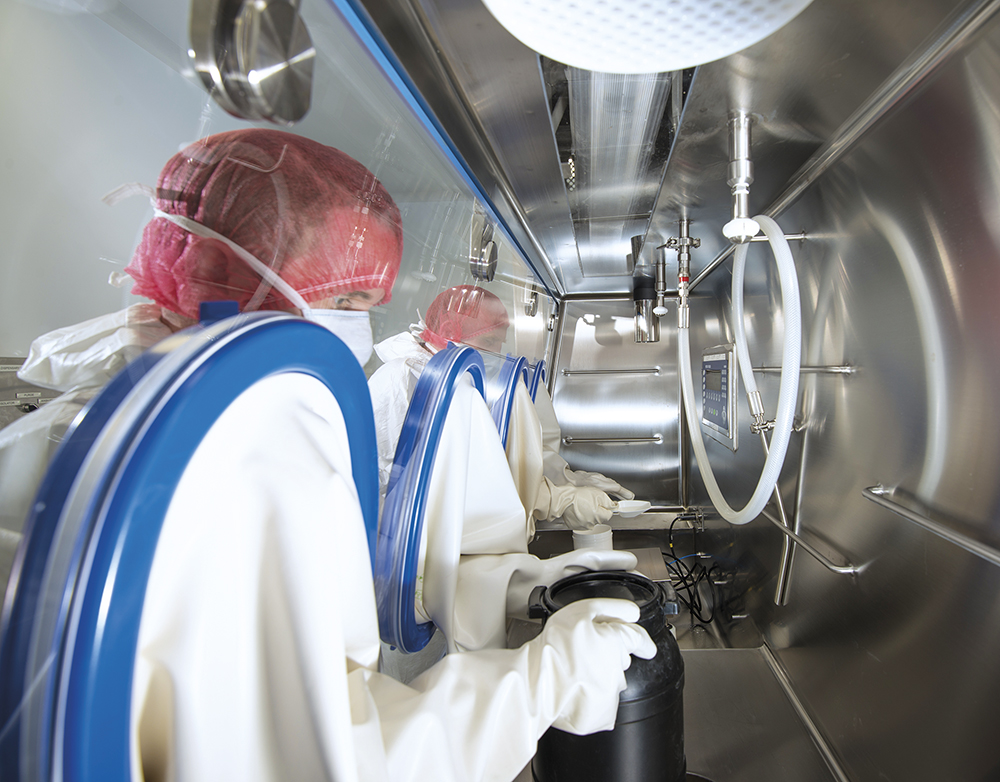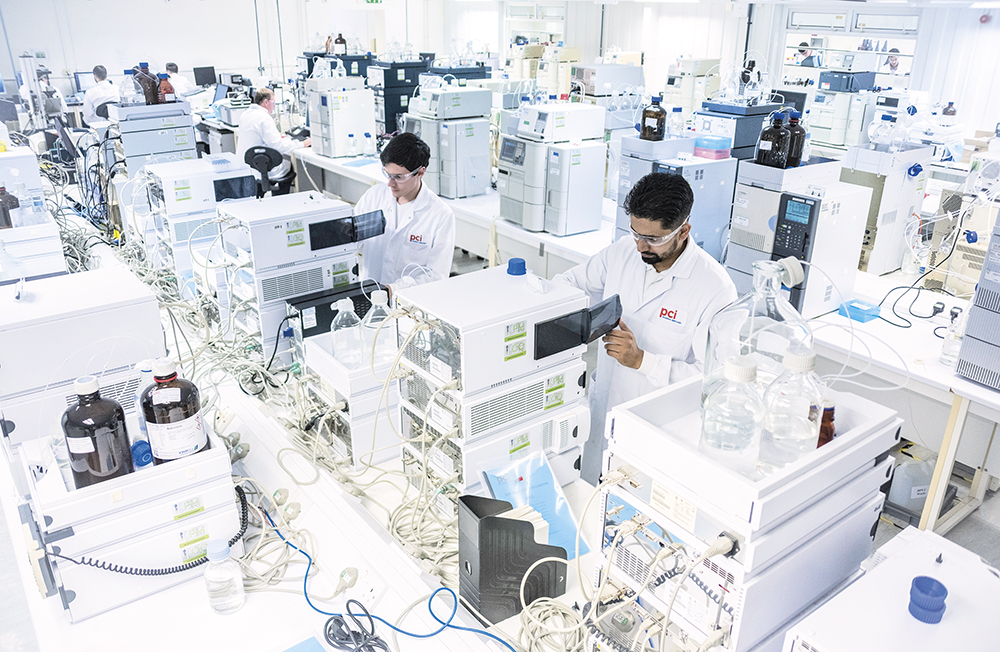To Issue 173
Citation: Gupte A, “TPDs: Developing the Next Generation of Oral Therapeutics”. ONdrugDelivery, Issue 173 (May/Jun 2025), pp 10–13.
Dr Anshul Gupte looks at how targeted protein degraders are redefining the landscape of drug delivery, creating new strategies for previously untreatable diseases. The article goes on to consider the scientific, manufacturing and regulatory challenges ahead, while considering the role specialised CDMOs can play in overcoming these obstacles.
Targeted protein degraders (TPDs) are transforming the landscape of modern drug discovery and development, introducing a ground breaking method for tackling diseases that have previously been deemed untreatable. In contrast to traditional small-molecule inhibitors that only block protein function, TPDs harness the body’s natural degradation systems to eliminate harmful proteins altogether.
This pioneering approach paves the way for novel therapies in oncology, neurodegenerative diseases and immune-related conditions. Reflecting this potential, investment in TPDs has surged – venture funding soared from US$33 million (£25 million) in 2017 to $707 million in 2022, an increase of more than 2,000%.1 The global TPD market, valued at roughly $544 million in 2024, is projected to expand at a compound annual growth rate of 20.8% between 2025 and 2030.2 However, despite their vast potential, TPDs still face major obstacles, including formulation complexity, limited bioavailability and challenges in scaling up manufacturing.
ENGINEERING PRECISION
The scientific foundation of TPDs lies in their unique ability to selectively and irreversibly eliminate specific proteins by exploiting the body’s ubiquitin-proteasome system. Unlike traditional therapies – such as tyrosine kinase inhibitors, which focus on blocking protein function and often provide only temporary suppression– TPDs offer a more permanent solution by binding to the target protein and guiding it towards degradation. This results in a more sustained therapeutic effect and helps to overcome the issue of drug resistance. TPDs are especially valuable in situations where conventional small-molecule inhibitors fail to achieve adequate specificity or efficacy.
In oncology, TPDs are showing strong therapeutic potential, with active investigations underway for their use in treating lung cancer, breast cancer, multiple myeloma and lymphoma. Their applications are not limited to cancer; research is expanding into neurodegenerative disorders such as Parkinson’s disease, where protein misfolding and aggregation are central to the progression of the disease. TPDs also hold significant promise for immunological conditions, offering a novel way to selectively target and eliminate proteins that drive chronic inflammation and immune system dysregulation. With thousands of proteins performing diverse roles in the human body, the scope of TPDs is vast, making them one of the most compelling emerging areas in modern drug development.
Leading TPD strategies currently under exploration include proteolysis-targeting chimeras (PROTACs) and molecular glues, both of which have already progressed to clinical trials. PROTACs are bifunctional molecules that simultaneously bind to the target protein and an E3 ubiquitin ligase, initiating the degradation cascade. In contrast, molecular glues facilitate the degradation process by strengthening the interaction between a target protein and a ubiquitin ligase, subtly recruiting the body’s degradation machinery with greater efficiency. As both technologies continue to evolve, they are expected to fundamentally reshape the future of therapeutic intervention.
“THE THERAPEUTIC PROMISE OF TPDs IS SUBSTANTIAL, YET THEIR DEVELOPMENT PRESENTS A SERIES OF COMPLEX CHALLENGES.”
DEVELOPMENT CHALLENGES WITH TPDs
The therapeutic promise of TPDs is substantial, however, their development presents a series of complex challenges. Unlike conventional small-molecule drugs, which generally align with well-characterised pharmacokinetic and pharmacodynamic behaviours, TPDs often possess atypical properties that complicate formulation and delivery.
A key hurdle in formulation arises from the structural complexity of TPDs. Their relatively high molecular weights, along with the inclusion of multiple functional groups required for effective target binding and E3 ligase recruitment, frequently result in poor solubility and limited membrane permeability. These physicochemical characteristics can significantly impair oral bioavailability, prompting the need for advanced formulation techniques to enhance absorption. Among the two main classes of TPDs, molecular glues – being smaller and structurally simpler – have demonstrated better potential for oral delivery, whereas PROTACs typically require additional solubility-enhancement strategies.
To address these solubility limitations, researchers are investigating a variety of formulation methods, including hot-melt extrusion, spray drying, nano-milling and lipid-based delivery systems. Each approach offers specific advantages depending on the unique attributes of the compound. For instance, spray drying and hot-melt extrusion can increase the bioavailability of poorly soluble drugs by generating amorphous solid dispersions. On the other hand, nano-milling enhances dissolution by reducing particle size, while lipid-based formulations exploit the body’s endogenous lipid absorption pathways to facilitate drug uptake.
Further complicating development is the fact that many TPDs do not conform to Lipinski’s Rule of Five, a widely accepted guideline for predicting the oral bioavailability of small-molecule drugs. TPDs often exhibit characteristics such as elevated molecular weight, limited permeability and high numbers of hydrogen bond donors and acceptors. These deviations necessitate comprehensive solubility screening and early-stage optimisation to ensure alignment between the formulation strategy and the intended route of administration. Moreover, excipients play a pivotal role in stabilising the final dosage form and ensuring content uniformity, particularly important for TPDs, which often require low drug loads due to their high potency (Figure 1).

Figure 1: Interior of a high-potent isolator.
PHASE-APPROPRIATE DEVELOPMENT
When working with complex modalities such as TPDs, pharmaceutical development must be approached as a continuous, adaptive process rather than a fixed set of activities. A scientifically rigorous, strategically flexible and operationally collaborative framework is essential for guiding molecules from discovery to commercial readiness.
Scientifically, the foundation lies in quality by design. This approach begins with a clear understanding of the desired product attributes, including quality, safety and efficacy, defined by the target product profile (TPP). However, the TPP is not static – it starts broad during early development and becomes more refined as the programme progresses, ultimately aligning with regulatory expectations and real-world patient needs.
Strategically, a phase-appropriate plan is vital. Each phase should build intelligently upon the last, with clear inputs, outputs and technical goals tailored to where the product is in its lifecycle. In early-phase development, speed is paramount. Simple formulations, such as a neat API in a capsule, can provide sufficient stability for first-in-human studies. As the product advances, more robust and scalable formulations are introduced to meet the demands of later-stage trials and commercial production.
Operationally, communication and collaboration are key. Development cannot occur in silos; alignment across drug substance; chemistry, manufacturing and controls (CMC); and clinical teams is critical. CDMOs must be able to interpret the sponsor’s vision and translate it into viable, scalable and patient-friendly formulations without locking themselves into inflexible paths. This requires not only scientific expertise but also a willingness to adapt based on new data or shifting priorities.
PCI Pharma Services applies this philosophy through a stage-gated pharmaceutical development process that mirrors the clinical lifecycle, spanning from formulation and analytical development, through toxicology batches to Phase I/II/III studies. As development progresses, the focus shifts from flexibility to robustness, with increasing attention to identifying and controlling critical material, quality and process parameters. These elements inform the control strategies and specifications that underpin a successful product.
Given the concurrent scale-up of drug substance and drug product, close co-ordination is especially important. Understanding how an API’s characteristics, such as morphology or impurity profile, might evolve during scale-up is essential to avoid formulation issues downstream. In the context of targeted therapies such as TPDs, where precision is paramount, the margin for error is razor-thin. A phase-appropriate, science-led development strategy is not just ideal – it is imperative.
MANUFACTURING AND STABILITY
Manufacturing TPDs demands a highly sophisticated approach that accounts for their potency, scalability and stability. Due to their precise mechanism of action, TPDs are frequently highly potent compounds, necessitating rigorous containment protocols to ensure safety during production. As a result, manufacturing environments must be equipped with high-containment capabilities – something not all facilities possess. This limitation makes strategic partnerships with CDMOs a critical component of TPD development and scale-up.
Containment is only part of the equation; the structural complexity that grants TPDs their therapeutic precision can also render them more vulnerable to chemical or physical degradation under various conditions. As these compounds move from laboratory to large-scale production, ensuring their stability becomes a significant focus. Maintaining formulation integrity throughout scale-up and commercial manufacturing requires the judicious selection of excipients, optimised processing techniques and advanced analytical tools for continuous monitoring (Figure 2). Robust in-process controls are essential not only for maintaining batch-to-batch consistency but also for ensuring that the final drug product meets all regulatory and quality requirements.

Figure 2: PCI’s analytical development laboratory.
THE ROLE OF A CDMO
As drug development becomes increasingly complex, biotech and pharmaceutical companies are increasingly turning to CDMOs to navigate the unique challenges of TPDs. A strong CDMO partner provides essential support across the development lifecycle, offering deep expertise in the handling of highly potent compounds, advanced formulation technologies and contained manufacturing. A CDMO’s infrastructure can be critical for supporting the seamless transition of TPDs from preclinical stages through to commercial scale supply.
A particularly crucial area of support lies in analytical development. The characterisation of TPDs requires a suite of highly specialised techniques, including surface plasmon resonance, mass spectrometry, fluorescence polarisation, X-ray crystallography and bio-nuclear magnetic resonance spectroscopy. These advanced methods are indispensable for assessing key attributes, such as protein-binding efficiency, degradation kinetics and molecular stability. Given the complexity of these analytical tools and the expertise required to operate them effectively, many pharmaceutical companies partner with CDMOs to gain access to the necessary infrastructure and know-how.
In addition to its strengths in manufacturing and analytical services, PCI Pharma Services has more than 35 years of experience in the development of highly potent drug products. The company has also formed strategic partnerships to further expand its capabilities in solubility enhancement and particle engineering, two areas that are particularly relevant to the development of TPDs. Through cutting-edge techniques, such as hot-melt extrusion, amorphous solid dispersion formation and nano-milling, PCI’s partner network helps to optimise bioavailability and ensure consistent product performance, enabling the successful development of TPD candidates that might otherwise be limited by poor solubility or inconsistent pharmacokinetics.
TPDs: LOOKING AHEAD
The field of TPD research is advancing at a remarkable pace, fuelled by ongoing innovation in medicinal chemistry, structural biology and computational modelling. Over the next five to ten years, the pipeline of new TPD candidates is expected to grow substantially, with a strong focus on enhancing oral bioavailability and expanding the spectrum of druggable proteins. Continued progress in the discovery and refinement of E3 ligase ligands will further improve the specificity and efficiency of TPD design, enabling more precise and effective therapeutic outcomes.
Artificial intelligence (AI) and machine learning are also set to play transformative roles in TPD discovery. By streamlining compound identification and optimising lead selection, AI-driven high-throughput screening is poised to reduce development timelines and increase the likelihood of clinical success. These technologies will enable researchers to prioritise the most promising molecules for synthesis and biological evaluation, accelerating the journey from concept to candidate.
As regulatory pathways for TPDs continue to evolve, early engagement with regulatory agencies will be essential for ensuring alignment and avoiding delays. Proactive dialogue can help to clarify requirements and facilitate smoother approvals. Throughout this process, CDMOs will remain invaluable partners – bringing deep regulatory experience, advanced formulation capabilities and scalable manufacturing infrastructure to support the development of stable, high-quality TPD-based therapies.
SUMMARY
TPDs are ushering in a new era of drug development, offering a fundamentally different approach through the selective and irreversible elimination of disease-causing proteins. Although their development is accompanied by a distinct set of scientific and logistical challenges, specialised CDMOs are playing a pivotal role in overcoming these obstacles – supporting everything from advanced formulation to high-containment manufacturing and regulatory navigation. With continued progress in medicinal chemistry, bioengineering and computational tools, the momentum behind TPDs is only expected to grow. This promising modality stands poised to deliver transformative therapies across a broad range of diseases, potentially reshaping the future of modern medicine.
REFERENCES
- “Venture financing for targeted protein degraders soared in 2022”. Pharmaceutical Technology, Oct 27, 2023.
- “Targeted Protein Degradation Market Trends”. Grand View Research, 2024.

